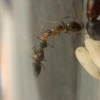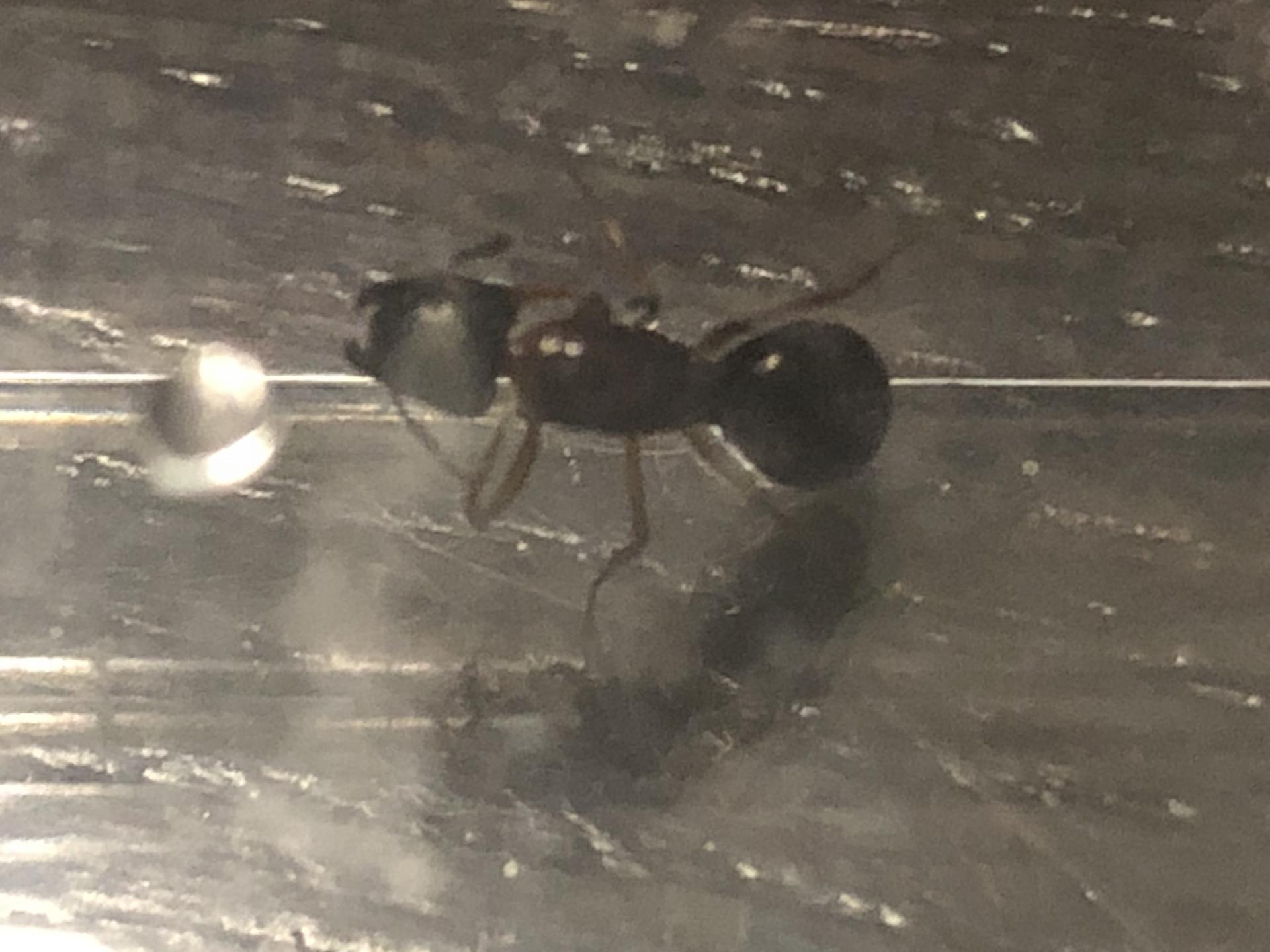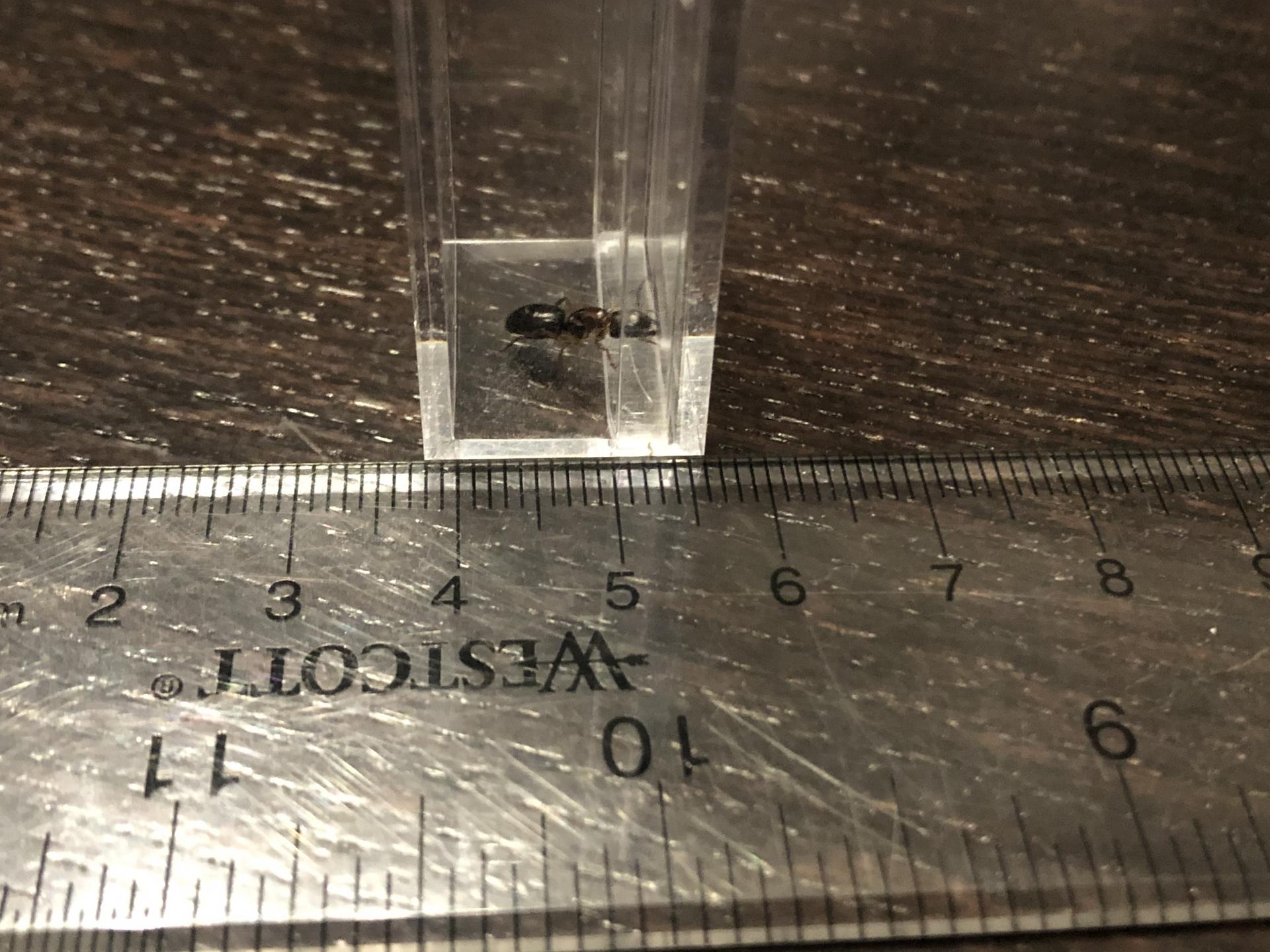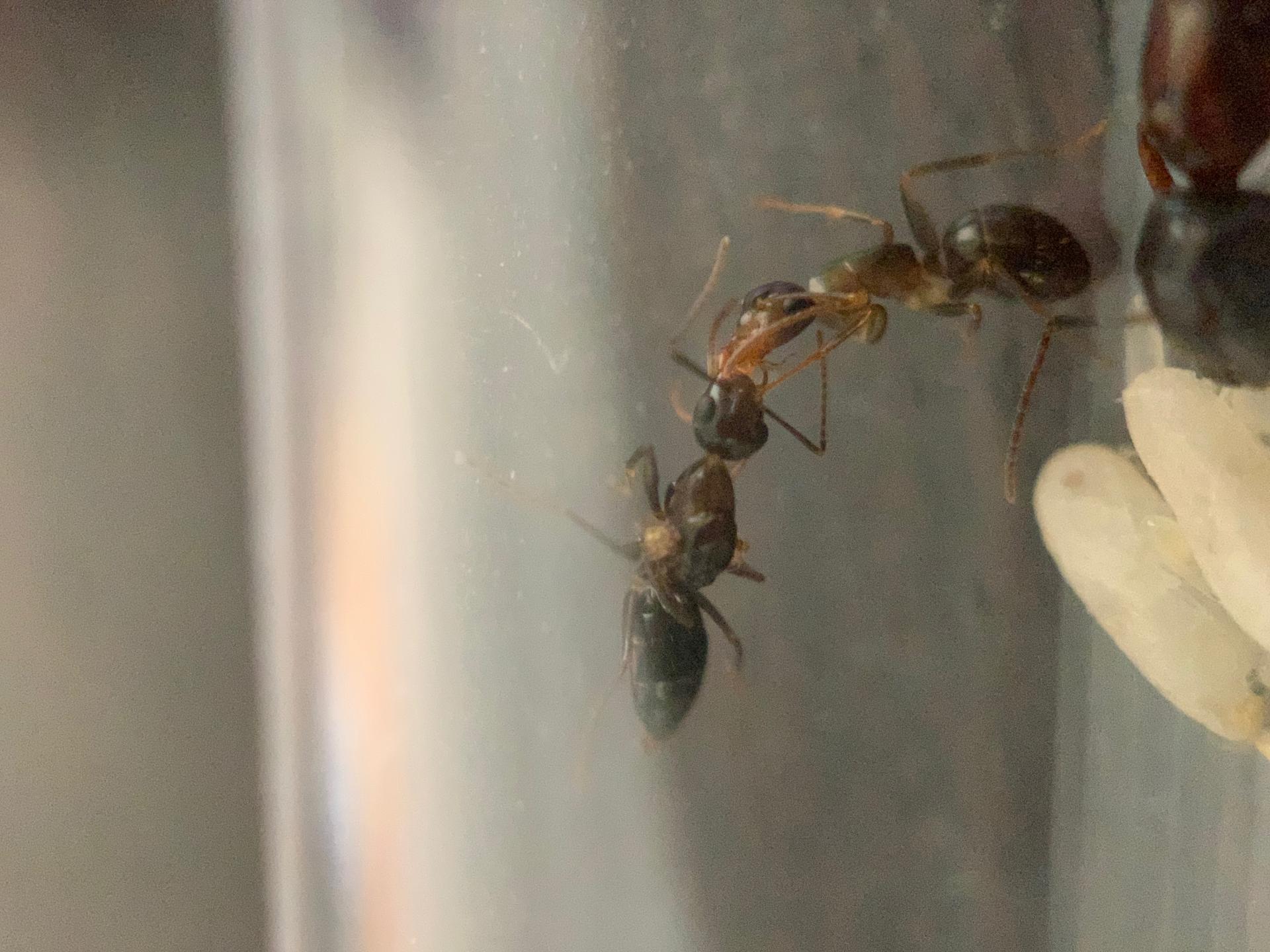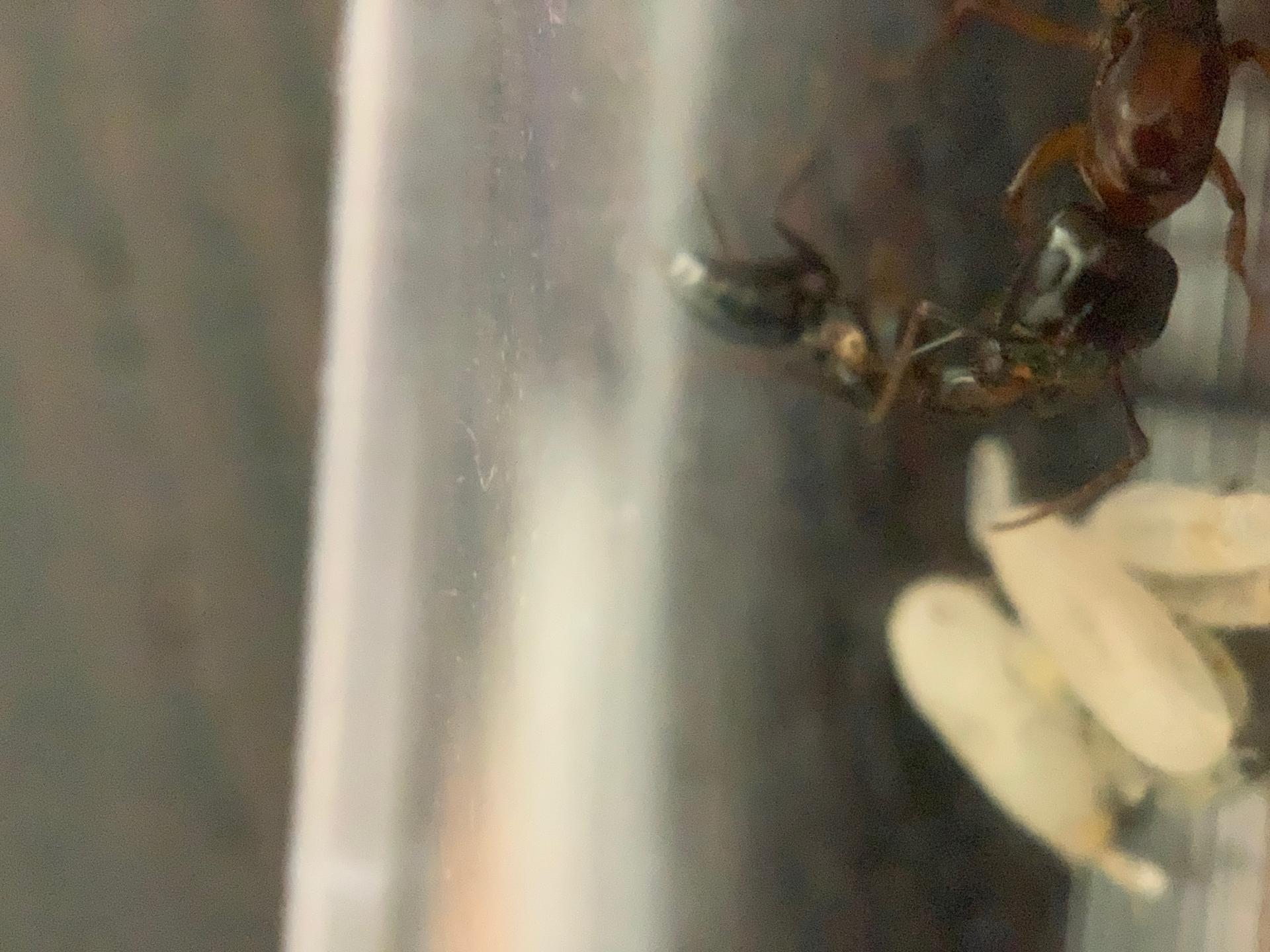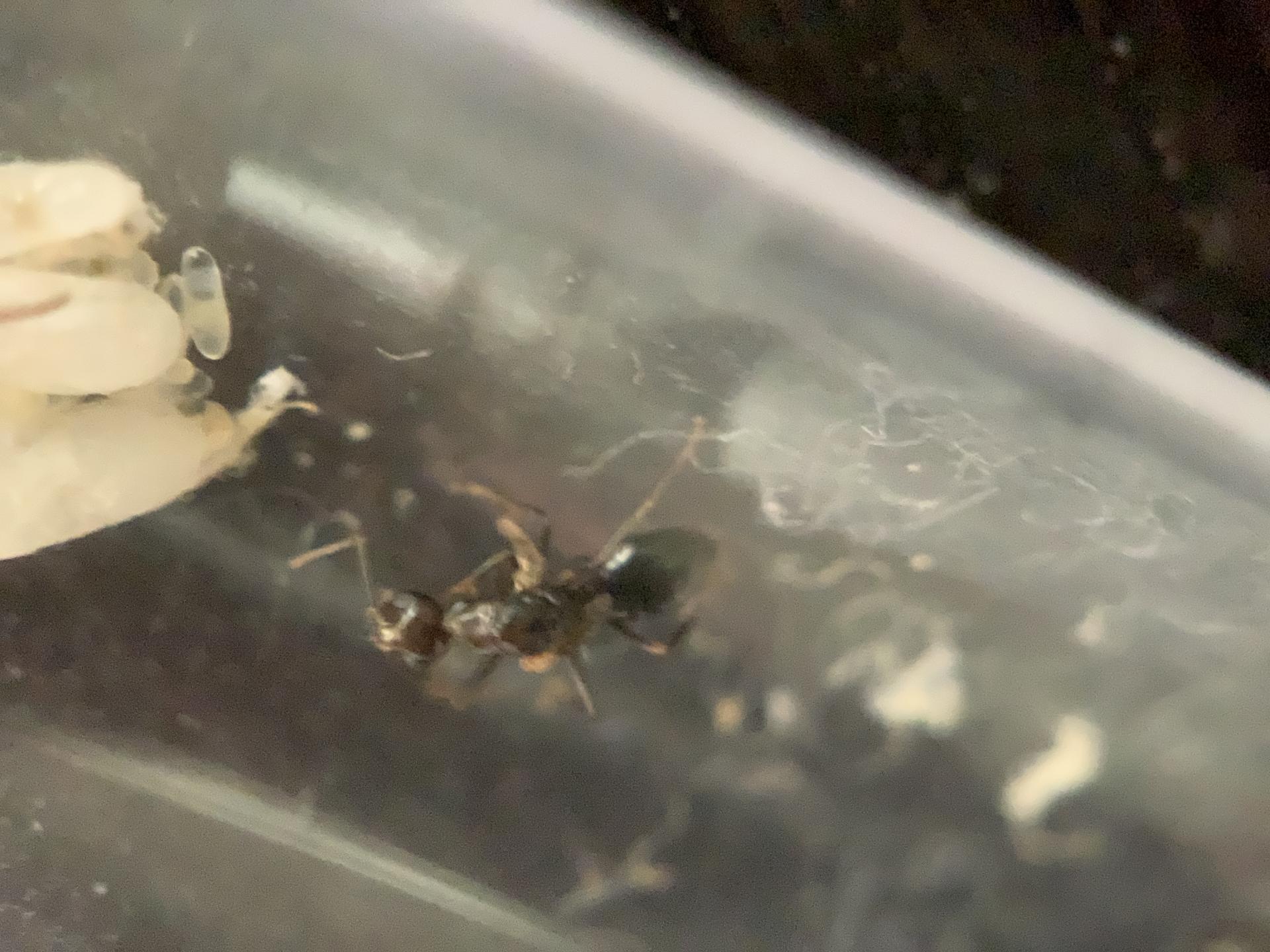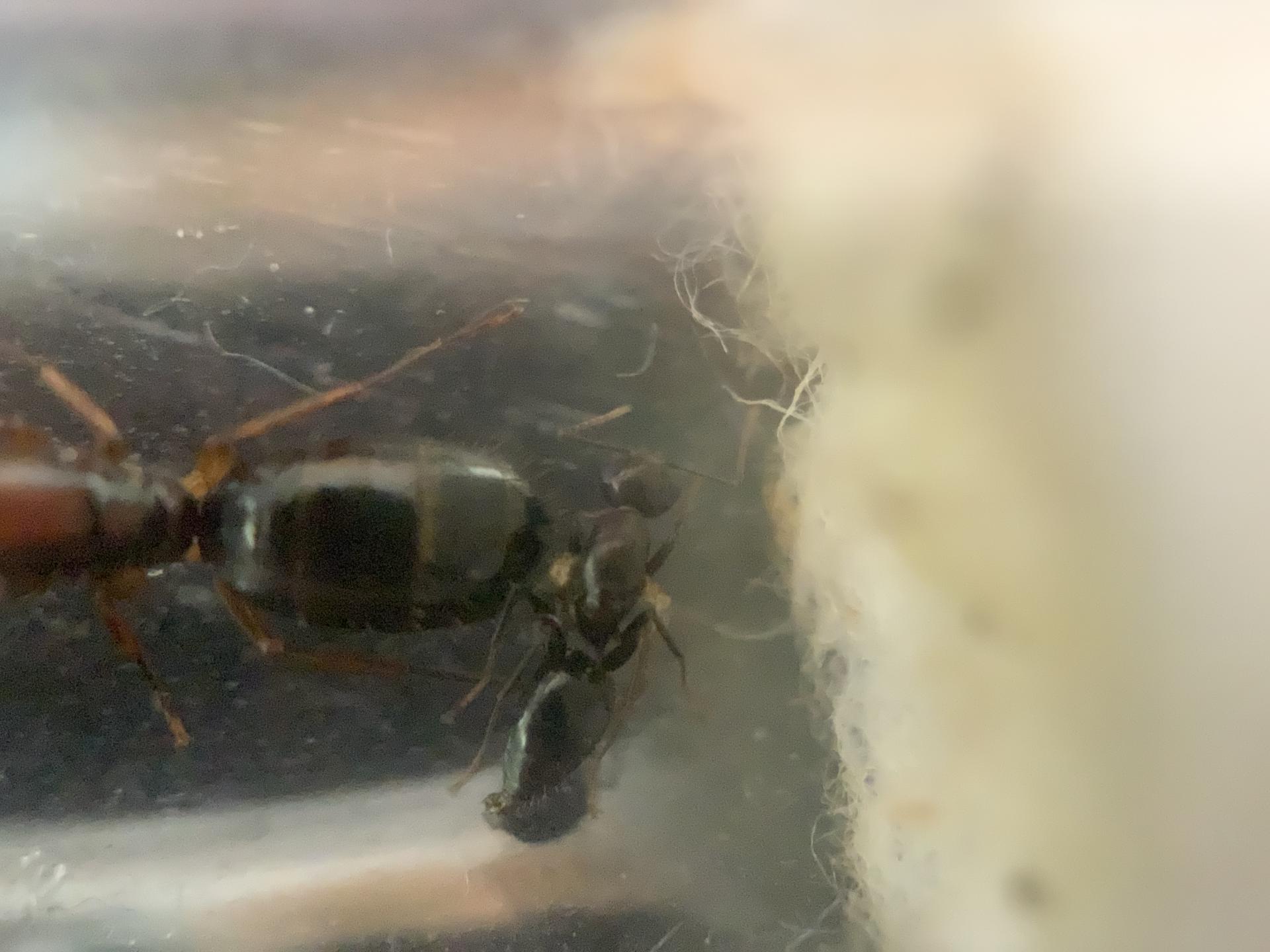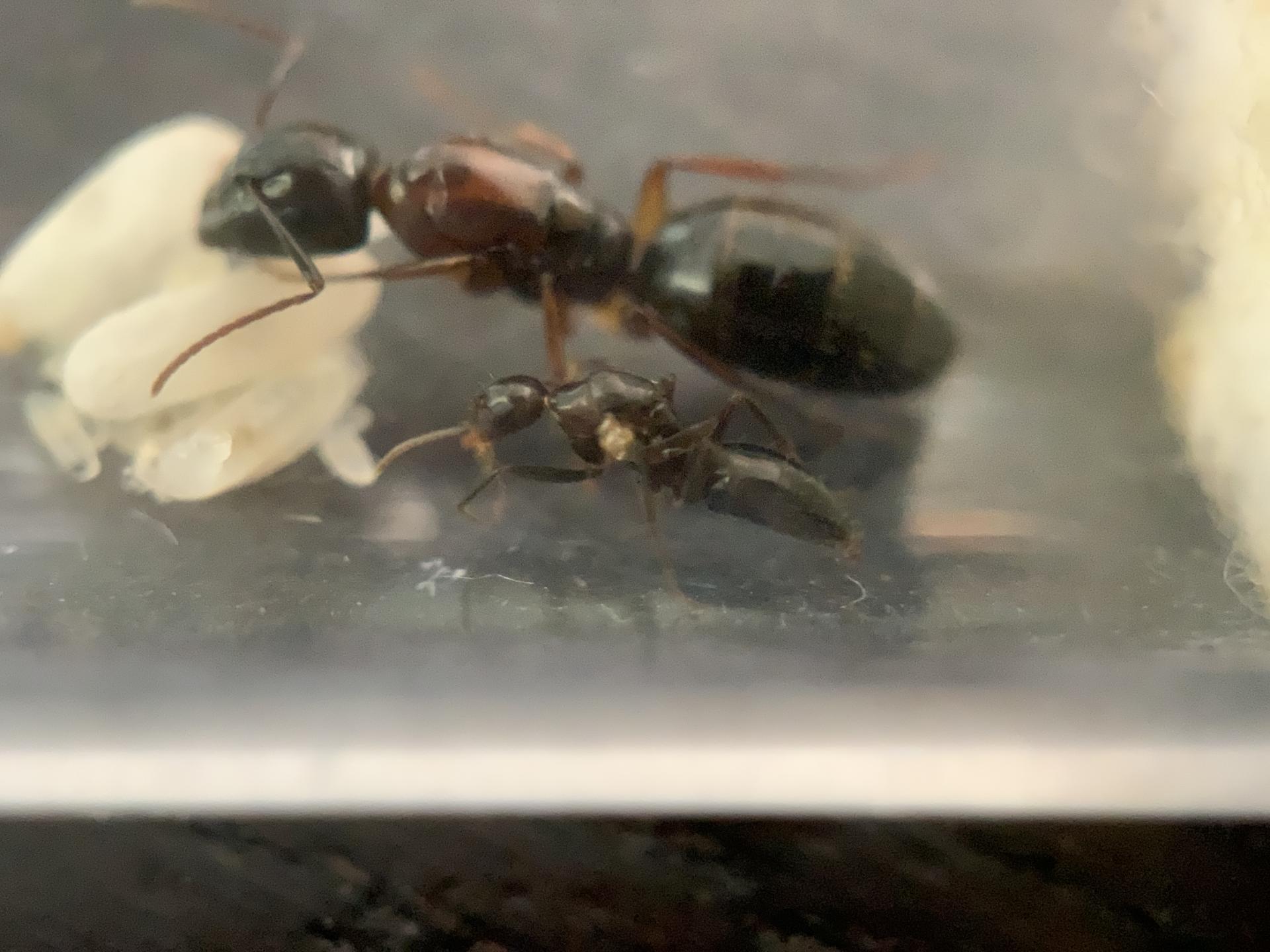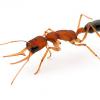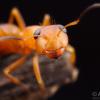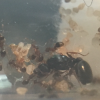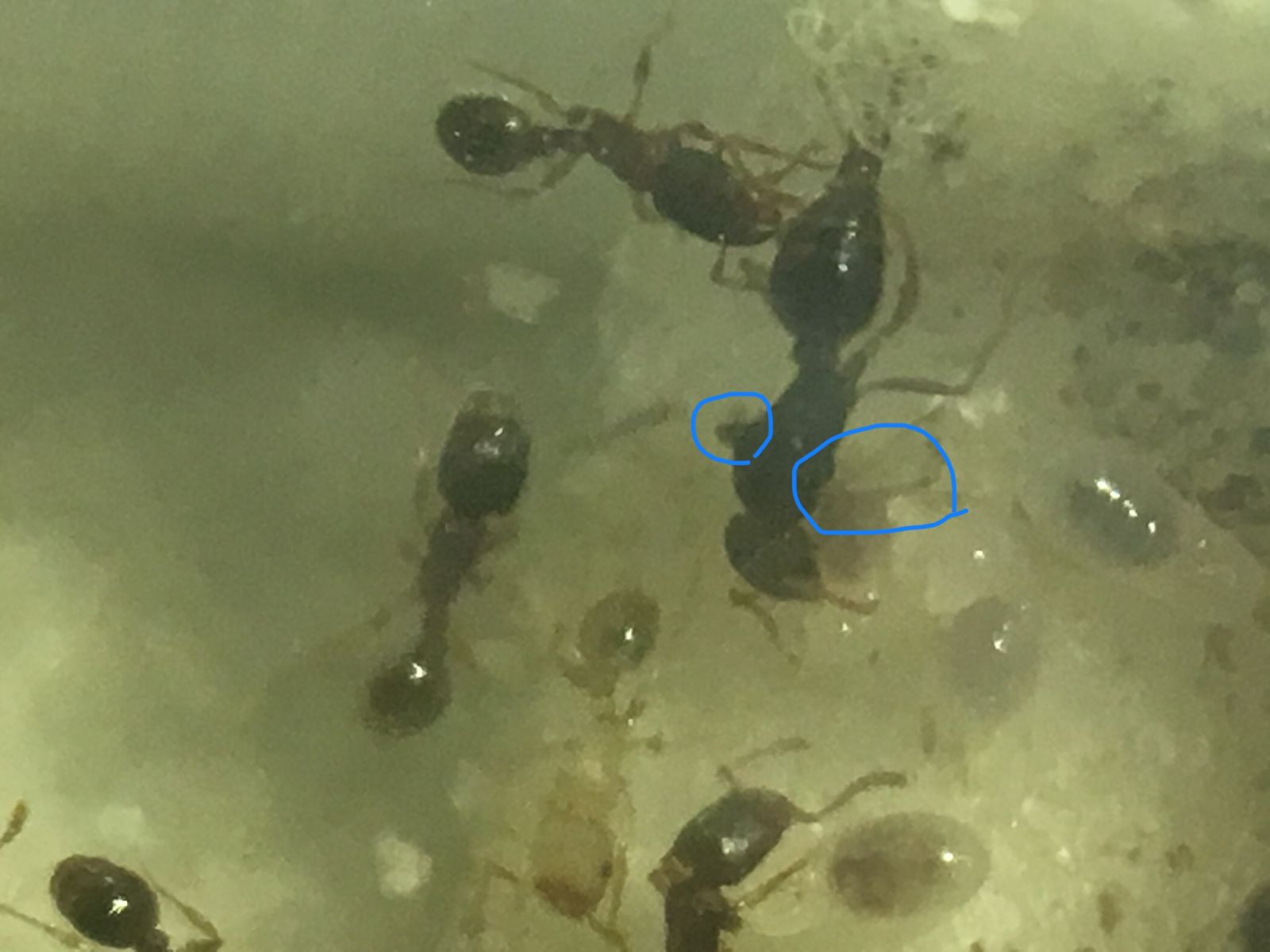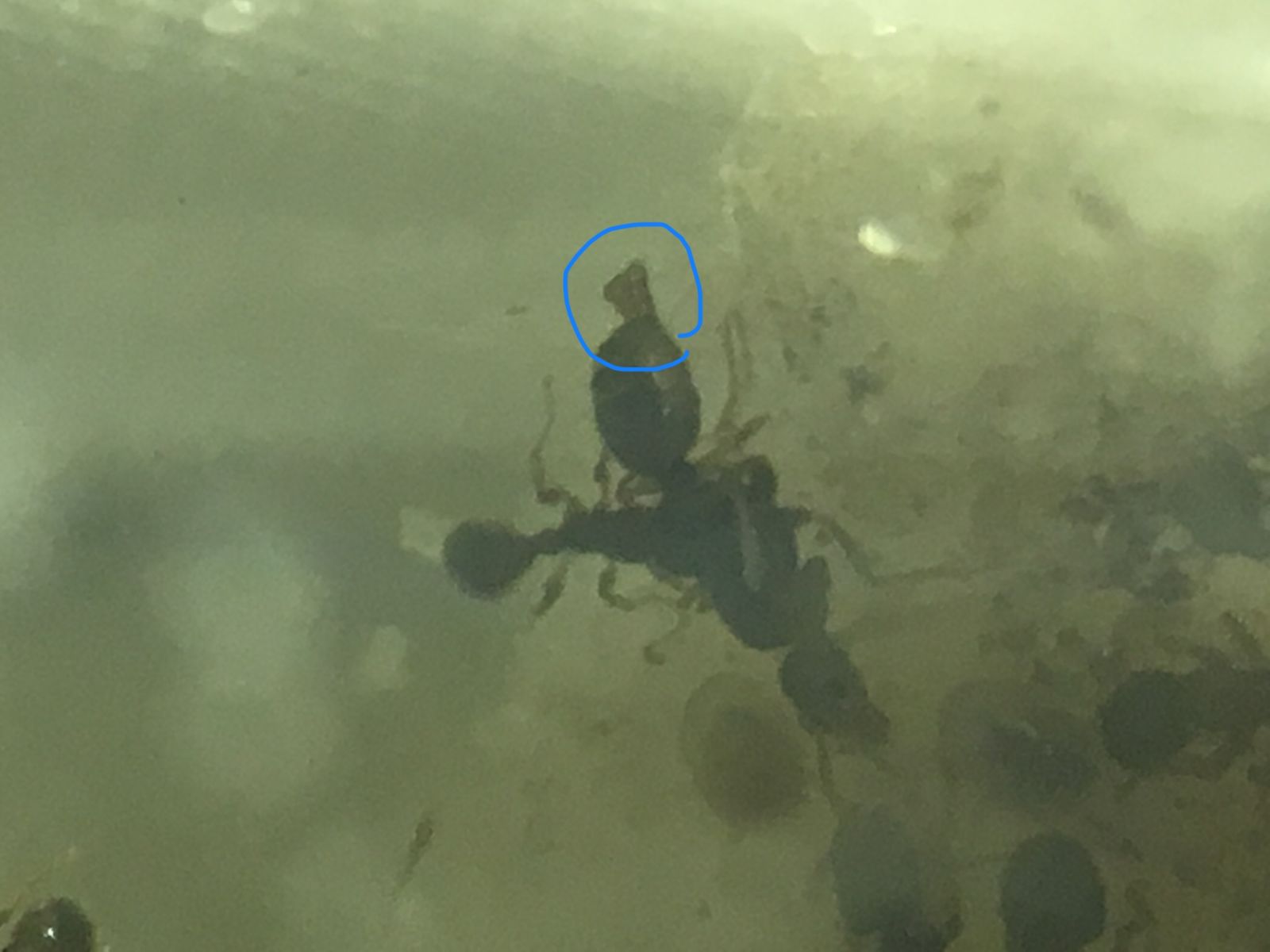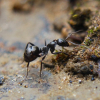Well, I though the queen was unfertilized but now there seems to be a worker. The first "nanitic" produced was a male, but the second one was a proper worker nanitic? ![]()
![]()
![]() . Its also my first colony* so I was disappointed with the male, but now the queen is partially fertilized? The Male fed the worker and queen so its kinda a worker? Its got limp wings hanging of the side of it's body.
. Its also my first colony* so I was disappointed with the male, but now the queen is partially fertilized? The Male fed the worker and queen so its kinda a worker? Its got limp wings hanging of the side of it's body.
*cool colony (other one is I think monomorium minimum)
edit: It might not be monomorium, it might just be argentines or tetra. It is a dark black and shaped more like the monomorium pictures i've looked (not an expert) but antmaps says not many nearby. Now I think they may be Tapinoma but I don't really care too much.
Edited by rcbuggy88, June 26 2020 - 3:40 PM.


